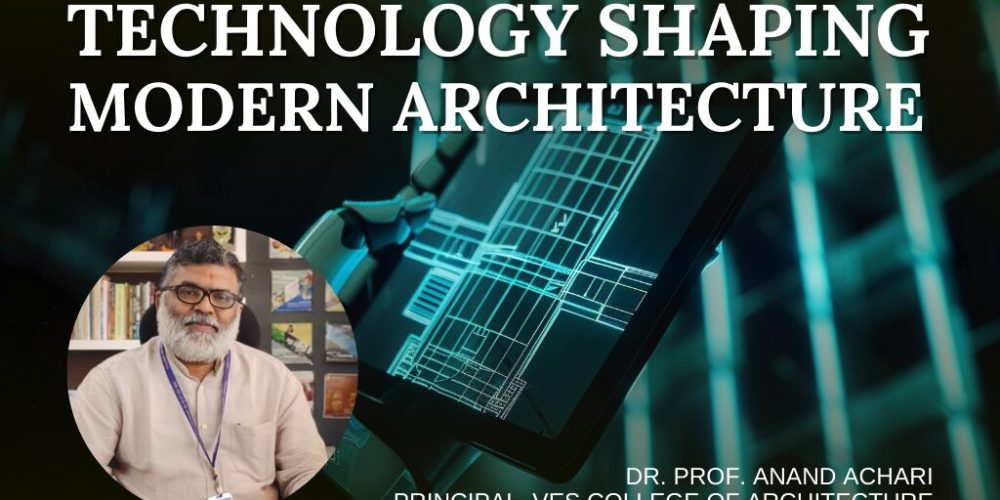Dr. Prof. Anand Achari, Principal at VES College of Architecture
In the realm of architecture, Architectural technology has emerged as a transformative force, ushering in a digital renaissance that is reshaping the way buildings are designed, constructed, and experienced. From innovative materials to advanced digital tools, technology acts as a catalyst, pushing the boundaries of creativity and functionality while fostering a more sustainable future for the built environment.
One of the most significant impacts of architectural technology lies in the design process itself. Architects are no longer confined to the limitations of pen and paper. Today, they wield a powerful arsenal of digital tools and software that enable them to visualize and simulate their ideas with unprecedented accuracy and detail. Computer-aided design (CAD) software acts as a virtual canvas, allowing architects to create intricate 3D models of their projects. These models function as digital playgrounds redefining, exploring and optimising every aspect of the design before laying a single brick. This not only streamlines the design process but also fosters greater precision and efficiency, ultimately leading to more innovative and sustainable architectural solutions.
BIM Technology
Furthermore, advancements in building information modelling (BIM) have revolutionized collaboration within the construction industry. BIM technology empowers architects to create detailed digital representations of buildings, akin to digital blueprints brimming with information. These models encompass every component and system, from the structural framework to the intricate details of the HVAC systems. This level of integrated data allows architects, engineers, contractors, and clients to work together seamlessly in a virtual environment. By fostering clear communication and reducing errors, BIM technology ultimately delivers better-built environments that are a testament to collaborative excellence.
Advanced Materials and Techniques
Beyond design and collaboration, technology has transformed the very act of construction. The development of advanced materials and techniques has pushed the boundaries of what’s possible, allowing architects to breathe life into designs that were once relegated to the realm of fantasy. Take, for instance, carbon fibre-reinforced polymers (CFRP). These lightweight yet incredibly strong materials have empowered architects to design structures that are both aesthetically pleasing and structurally sound. Similarly, advancements in prefabrication and modular construction have ushered in a new era of speed, efficiency, and sustainability. By constructing components off-site and then assembling them on location, these techniques minimize waste and environmental impact while delivering faster and more cost-effective construction.
The impact of technology extends far beyond the construction phase, influencing how we experience and inhabit buildings. The integration of smart building technologies, such as sensors, actuators, and automation systems, has made buildings more responsive to the needs of their occupants and the environment. From energy-efficient lighting and climate control systems that adjust based on real-time usage to intelligent security and surveillance systems, smart buildings are redefining the way we interact with our built environment. This technological integration enhances comfort, safety, and productivity, creating spaces that are not just aesthetically pleasing but also truly responsive to our needs.
Visualization Tools
Looking towards the horizon, the future of architectural technology promises to be a captivating blend of human ingenuity and technological prowess. Emerging technologies like artificial intelligence (AI), virtual reality (VR), and augmented reality (AR) are revolutionizing building design, construction, and experience. AI-powered design assistants can analyse vast amounts of data to suggest innovative solutions, while VR-enabled virtual walkthroughs allow architects and clients to experience a building virtually before it’s built. Additionally, AR-enhanced visualization tools can overlay digital models onto real-world settings, facilitating a more intuitive and collaborative design process.
By harnessing the power of digital tools and embracing cutting-edge technologies, architects are pushing the boundaries of what is possible. This digital renaissance is fostering the creation of buildings that are not only aesthetically stunning but also functional, sustainable, and responsive to the needs of their occupants and the environment.


